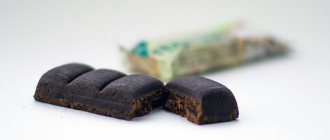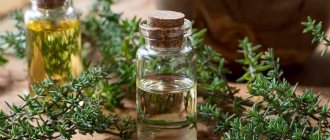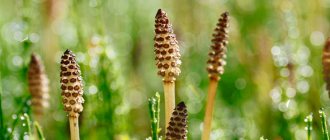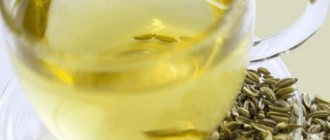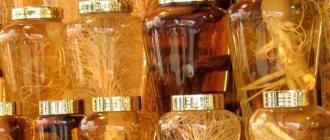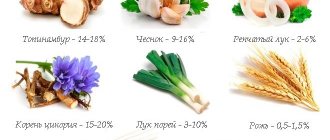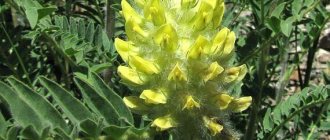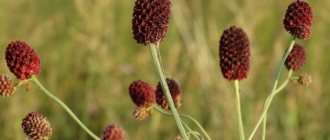Sage is a herbaceous medicinal perennial, 20-70 cm high, from the Lamiaceae family. The stems and leaves of sage have medicinal qualities, and the doctors of ancient Greece knew about the beneficial properties and contraindications of the plant.
What is sage?
Sage is a herbaceous plant that belongs to the subshrub family. The maximum height reaches 80 cm. Initially it was grown in Western Europe, then it spread throughout Eurasia. Most often found in fields. But every person can grow it in a vegetable garden.
The plant survives in warm and cold climates. But if there is not enough snow and severe frosts in winter, it dies. It survives well in severe droughts in summer. If you care for it properly, it becomes perennial. Flowering occurs in the summer (usually starting in the second year after planting), the fruits ripen in the fall.
Chemical composition
Sage is beneficial for the body because it has the following chemical composition:
- Cineole - has an antimicrobial, expectorant effect, it is added to essential oils to give a pleasant smell to the room.
- Thujone has hallucinogenic properties in large dosages, but in the bush its concentration is minimal, so it is not capable of causing harm to the body.
- Borneol - used for the manufacture of perfumes and scented candles.
- Ursolic acid - stimulates blood flow to the muscles, reduces the amount of free fats, glucose, cholesterol, triglycerides. It has antiseptic, anticarcinogenic, anti-inflammatory effects. It is often used to create cosmetics, because... acid activates hair growth by normalizing blood circulation in hair follicles, improves the quality of the scalp and eliminates dandruff.
- Oleic acid - saturates the body with energy, is used to create perfumes and cosmetics.
- Chlorogenic acid - eliminates free radicals that can damage tissue, inhibits the growth of malignant cells, and destroys pathogenic microorganisms.
- Uvaol - reduces inflammatory reactions, increases diuresis, removes toxic substances and fluid from the body.
- Tannins - eliminate the inflammatory reaction and pain.
- Linolenic acid is a source of Omega-6, saturates the body with energy.
- Salvin is an antimicrobial agent of plant origin.
properly prepared raw materials retain all the biologically active components of the fresh plant
In addition to the above components, the shrub contains camphor, phytoncides, alkaloids, and flavonoids. Also in various parts of the plant there are vitamins A, E, K, PP. They help speed up metabolism. Due to this, the regenerative ability of tissues increases. The cellular composition is renewed faster.
The shrub is rich in micro- and macroelements: potassium, phosphorus, calcium, manganese, sodium, selenium, copper, zinc. They help improve the functions and strength of the musculoskeletal system, normalize the activity of the cardiovascular and nervous systems.
The largest amount of useful substances is contained in the seeds. Essential oils used in various fields of medicine are made from them.
Compound
The pharmaceutical preparation is sold in the form of a powder, packaged in filter bags, or a crushed herbal preparation for preparing infusions. The medicinal drug belongs to the group of antiseptics, disinfectants, anti-inflammatory, and painkillers.
In the composition of sage, 72% of the dry weight is carbohydrates, 15% is fat and 13% is protein.
The powder prepared from dry sage herb contains compounds that actively affect the physiological processes occurring in the body. The main active ingredients of the medicine:
- triterpene saponins (ursolic, oleanolic acids);
- flavonoids (salvitin, luteolin, hispidulin);
- salvin;
- phytoestrogens;
- phytoncides;
- essential oils;
- ascorbic acid, B vitamins, vitamin A;
- tanning compounds;
- minerals (magnesium, potassium, calcium, iron, zinc, manganese, strontium, boron).
In small quantities, the drug contains polyunsaturated and monounsaturated fatty acids, bitterness, sodium, phosphorus, sugar and dietary fiber. The calorie content of 100 g of dry powder is 315 cal.
Salvin is a substance that has an antibacterial effect, has an astringent, anti-inflammatory effect. Based on salvin, obtained by extraction of dry raw materials of the “sacred herb,” the drug Salvin-VIF was created.
Useful properties of herbal tea
The leaves contain antioxidants that prevent the aging of the body; decoctions and tea with sage are also used to prevent cancer and heart diseases.
An infusion of the herb is useful for women: it is used to normalize the functioning of the entire female reproductive system.
Important! Knowing about the beneficial properties of sage leaves and what they help with, you should understand that this is not a medicine; a decoction or herbal tea cannot replace the necessary treatment, but only complement it.
Is it possible for children
Sage is used in the treatment of children over 5 years of age. In which cases:
- a cold accompanied by a runny nose, cough, fever;
- bronchopulmonary pathologies;
- inflammation in the oral cavity;
- minor cuts;
- insect bites.
For a child under 12 years of age, it is recommended to choose treatment methods that involve the use of baths, rinses, and sage lotions. Children should be given herbal tea or infusion in a minimum dosage after consultation with the pediatrician. To understand why it is necessary to observe restrictions, it is worth remembering the herb’s ability to influence hormonal levels.
An adult child can be given inhalations with essential oil, teas, infusions and decoctions. Discuss the dosage and regimen with your doctor according to your age and health status.
Can I drink sage tea?
Any decisions regarding health should be made only by a doctor. Likewise, tea with sage, despite the presence of numerous beneficial properties, can bring not only benefits, but also cause harm. Therefore, it is important to get an answer from your doctor to the question of whether you can drink sage leaves, and only then buy healthy herbs.
Herbal tea with sage has a bitter taste, so a pinch of dry leaves is usually added to black or green tea. It is useful to do this, after consulting with a doctor, during epidemics of influenza and ARVI, and in the off-season as a prevention of colds and viral diseases.
Structure
The plant is a perennial, reaching a maximum height of 75 cm. The root is hard and branched. Numerous stems have a tetrahedral shape and are densely dotted with oblong leaves. The flowers are irregular in shape, purple or pinkish-white, and collected in inflorescences. The fruit remains in the calyx.
Flowering begins in the second year of the growing season and continues from late May to July. Sage is cultivated in heat-loving regions of Russia, Ukraine, Crimea, and for decorative purposes. The leaves have a strong odor. The upper parts of the plant and leaves, as well as the inflorescences of clary sage, have medicinal value.
Indications
The leaves are brewed to make an infusion or added to tea. As part of complex therapy, the drink is used for:
- inflammatory processes in the upper and lower respiratory tract;
- stomatitis and gingivitis;
- excessive excitability;
- depression;
- rapid fatigue.
It is important to consider indications for use and contraindications when using sage leaves as a medicine. The plant is included in the official Pharmacopoeia, but you should strictly adhere to medical recommendations and follow the dosage.
Herbal tea helps eliminate dyspeptic disorders that occur when eating fried and fatty foods: eliminates nausea, vomiting, pain and cramping in the stomach.
A drink made from medicinal herbs is good for women's and men's health; during menopause, it strengthens the nervous system, regulates sexual function, and reduces sweating.
How to use sage to treat the throat, gums, to remove bile, and as warm compresses?
A decoction of sage leaves and flowers is used to gargle sore throats and gums, to wash diseased areas of the skin externally, and to douche for female diseases.
Decoction recipe:
- 1 tbsp. Fill a spoonful of ground herbs with water (1 glass) , and set to cook in a water bath for 15 minutes.
- Then remove, strain through a sieve, add boiled water to a full glass.
- Use immediately, and if there is any left, keep in a cool place for no more than 12 hours. Warm up before rinsing.
Sage infusion is drunk to enhance the secretion of bile. It also helps with flatulence. You need to drink the infusion before meals (20 minutes before), 4 times a day, ¼ of a glass.
Infusion recipe:
- 1 tbsp. Pour boiling water (one glass) a spoonful of chopped sage leaves and flowers , cover and leave for 30 minutes.
Sage oil is very concentrated and is only suitable for external use. Application of oil:
- Aromatherapy . To spread the aroma in the building, the oil is dripped into a special pendant or lamp (1-2 drops); to take an aromatic bath, 3 drops are enough.
- Rinsing sore gums and throat . Add sage oil (4 drops) and soda (1 teaspoon) to warm water (one glass). Rinse your gums and throat with this solution 3-4 times a day.
- Prevention of colds and flu . In autumn and winter, when there are flu epidemics, rooms are aromatized; 3 drops are enough for a room of 15 m2.
- Warming compresses for application to sore joints, sprains and injuries. Add 10 drops of oil to 100 ml of water, wet gauze, squeeze it out and apply to the sore spot. Apply cellophane on top of the gauze, and then wrap it in a warm blanket for 3 hours.
- Wraps with sage oil for hair (hair grows faster after wraps). Take 4 tbsp. spoons of olive and 5 drops of sage oil, rub into the roots of the hair, wrap with film and then with a towel for 30 minutes. Then wash your hair with shampoo and rinse with sage decoction.
We advise you to read: Sea buckthorn tea: the best recipes, benefits and harms, cooking secrets
Sage oil
Sage tea is drunk to prevent colds, boost immunity, and improve memory.
Important : you should not drink more than one glass of sage tea per day.
Tea recipe.
- Dry sage leaves and flowers (1 teaspoon) are poured with boiling water (one glass) and drunk hot.
Sage Tea
Sage powder is often added as a flavoring to food. It tastes bitter and, taking it, improves the condition of the stomach with gastritis with low acidity of gastric juice.
For women
The healing power of sage allows many of the fair sex to cope with uterine fibroids, vaginitis, endometritis and other gynecological pathologies. She helps them:
- Regulate sexual function;
- Strengthen the nervous system;
- Reduce lactation to make it easier to transfer the child to artificial feeding.
However, the primary purpose of sage is to combat infertility, which is caused by low levels of estrogen in a woman’s body. At the same time, gynecologists and traditional healers recommend using its tincture according to a certain scheme.
Treatment should begin during menstruation, from the third or fourth day of a 28-day cycle, and end after a week, when the egg reaches its maximum size. Thus, a woman:
- The hemostatic effect will not be impaired.
- The uterine cavity will be completely cleansed.
- The egg is stimulated.
- The process of fertilization will occur favorably.
- The embryo will attach well to the wall of the uterus.
For men
A huge number of biologically active elements in sage can improve men's health. The use of this natural aphrodisiac allows representatives of the stronger sex:
- Increase potency and sexual activity;
- Optimize the functioning of the reproductive system;
- Stimulate metabolic processes;
- Fight genitourinary infections;
- Activate testosterone production.
Features of the impact on the male and female body
The presence of phytohormones, antibacterial, anti-inflammatory and restorative properties allows the use of sage in the treatment of female and male diseases. Features of the use of the plant in eliminating gynecological problems:
- Climax and hot flashes. The herb helps relieve symptoms caused by hormonal changes during menopause. The following medicinal properties of sage are important for women: partial replenishment of the lack of estrogen, prevention of mood swings and sudden rushes of blood to the upper body, regulation of metabolic processes that fail in people over 40 years of age. Ladies are recommended to drink tea from the leaves 3-4 times a day and take weekly baths with the decoction.
- Cystitis. The plant relieves inflammation, prevents the development of infectious process, reduces discomfort and pain when urinating. Infusion promotes healing, take 50 ml 3 times a day. Warm baths with a decoction also help.
- Frigidity. Sage accelerates the elimination of the main causes of sexual desire disorders: gynecological problems and nervous tension. Women benefit from the infusion, taken for 3 months. The healing properties of the drink are enhanced by linden flowers.
- Thrush. Douching and hygiene procedures with sage decoction accelerate the relief of inflammation, prevent the proliferation of fungi, and relieve itching. Sage drinks are used to prevent disease.
- Mastopathy. Herbal remedies promote the resorption of tumors, eliminate the feeling of heaviness and chest pain.
Features of the use of medicinal properties of sage for the prevention of diseases in men:
- Prostatitis. Herbal infusions accelerate relief from prostate inflammation and stimulate the release of pressure on the urinary canal. Men are recommended to take drinks once a day and do microenemas with a decoction of sage and chamomile.
- Impotence. The herb normalizes testosterone production, improves blood circulation in the genitals, and removes inflammation that reduces the level of desire. The disorder goes away faster if you drink a cup of tea 3 times a day. If a man has no problems with sexual desire, it is recommended to use it during conception. The plant eliminates the risk of infection and improves sperm quality.
Properties of sage for men and women with baldness
Treatment of baldness in men with sage
- A decoction of sage , if you apply lotions from it and wash your hair with the decoction, helps men with baldness . How does this happen?
Thanks to a decoction of sage, hair follicles are strengthened, thereby slowing down or stopping the process of baldness.
- Another purely male disease is treated by sage along with other herbs - vesiculitis (inflammation of the seminal vesicles near the prostate).
Decoction recipe:
- Take dry herbs: 2 parts sage, 3 parts poplar buds, 5 parts burdock roots , mix and pour into a dry jar.
- We make the decoction like this: 1 teaspoon. Pour a spoonful of the herbal mixture pour 0.5 liters of boiling water , leave for 10 hours and take ¼ of a glass 3 times a day.
microenemas with this decoction every other day , 15 times.
When to collect and how to dry
Procuring sage yourself allows you to obtain raw materials for treatment for free. Basic principles:
- Collection. Trim the tops of the bush for the first time a year after planting. We collect from May to July - on the eve and during flowering. We choose a product that is not damaged by insects and without signs of disease.
- Drying. We spread the raw materials in a thin layer on a baking sheet and leave them under a canopy outside or in a dry, ventilated area. Drying in the oven is not recommended, since this method entails the loss of the beneficial qualities of sage.
- Storage. As soon as the plant begins to crumble well under light pressure, we put the raw materials in bags made of natural fabric or paper bags, and place them in a dry cabinet where the sun’s rays do not penetrate. We store up to 2 years.
Properties of sage for women during infertility and menopause
Sage contains phytohormones that help cure gynecological diseases:
Sage infusion helps reduce:
- Hot flashes at the onset of menopause, profuse sweating and nervousness.
- Drinking an infusion of sage will reduce bleeding during heavy menstruation.
- The decoction reduces lactation in nursing mothers. You need to remember this when you want to wean your baby.
- Even more ancient Egyptians used the presence of the same phytohormones that act like estrogens to treat infertility. There can be many reasons for infertility, but ovulation disorders are more common.
- Sage helps the synthesis of estrogen and also replenishes their lack in the blood.
Before starting to treat infertility with sage infusion , a woman needs to study, using observations of the temperature in the rectum and ultrasound, when the egg reaches its largest size.
You need to take the sage infusion every day, from the 3-4th day of your period until the time when the egg is the largest.
Important . In the first days of the menstrual cycle, you should not drink sage infusion, as it has a hemostatic effect.
After the egg reaches its largest size, that is, ovulation, drinking sage infusion is contraindicated, since it keeps the uterus in good shape and can prevent the embryo from attaching to the uterine cavity.
Treatment of infertility in women with sage
For infertility and other female diseases, this infusion is used:
- Fill the chopped sage leaves (1 tablespoon) with boiling water (1 glass), close, leave for about 15 minutes, drink 4 times a day, 1/3 of a glass.
Important . If, after the first course of treatment with sage infusion, pregnancy does not occur, you can continue treatment, but not more than 3 courses, and then contact your doctor.
Women douche with a decoction of sage and make sitz baths for thrush, inflammation of the vaginal mucosa, and cervical erosion . It is advisable to carry out these procedures 2 times a day. They give positive results.
Important : the optimal temperature of the decoction for the procedures is 38°C.
Sage-based pharmaceutical products
Sage essential oil
Sage oil extract is effectively used for oral administration, rinsing, inhalation, massage, and aromatherapy sessions.
For headaches, take sunflower or olive oil (1\2 tsp) and add 2 drops of sage essential oil. The resulting mixture is rubbed into the temple areas.
For pain in the gastrointestinal tract, take st. l. vegetable oil and three drops of sage ether. The product is used for massage in the abdominal area.
For sore throat, gargle with a warm solution with a glass of water and three drops of sage ether.
Aromatherapy procedures with sage essential oil help relieve cold symptoms, nervous excitability, physical and mental fatigue, stress and headaches.
Taking 3 drops orally with water up to three times a day helps with nervous fatigue, digestive disorders, and high blood pressure.
Lozenges with sage
The antiseptic, antibacterial, astringent and expectorant effects of the tablets are used in the treatment of diseases of the oral cavity, throat, sore throat, pharyngitis, gingivitis, and stomatitis.
How to use:
- the maximum dose per day is six tablets;
- After taking it, it is advisable to refrain from eating and drinking water for a short time;
- the break between doses should be at least 2 hours;
- Sage for resorption is taken for up to 7 days.
Benefits and uses of sage for eye inflammation: recipe
Treatment of the initial stage of inflammatory processes of the eyes and swelling under the eyes
- For redness and the initial stage of inflammation of the eyes, an infusion of sage has proven itself well. The eyes are washed with warm fresh infusion.
- Sage infusion removes puffiness under the eyes.
Infusion recipe.
- Dried sage leaves (1 teaspoon) pour half a glass of boiling water , cover and leave for about 30 minutes.
- We filter the infusion and pour it into 2 containers: in one there is a warm infusion, in the other there is a cold one.
We wet cotton swabs first in a cold infusion and apply them to the eyelids, then in a warm one, and so on 5-6 times for each infusion. The procedure is done at night.
Reviews of sage leaves
Komarova Anna, 27 years old, Voronezh
I brew the herb and after it has cooled, I freeze it in the freezer. I wipe the skin around my eyes every day after applying the cream. Removes swelling and blackness under the eyes, cleanses the face of small pimples.
Timofeeva Irina Arkadyevna, 49 years old, Pskov
I am treated with herbs in bags for hot flashes. The hot flashes have not completely disappeared, but I feel less feverish, and at night I wake up less often from palpitations.
Feren Yulia, 42 years old, Krasnoyarsk
An infusion of sage herb helps relieve throat irritation and gum inflammation. If you rinse your mouth with a decoction on an empty stomach, and then in the evening, it helps to completely get rid of pain and bleeding gums in 5-7 days.
How to take for pregnancy
Sage, which helps in solving many female diseases, should be taken according to a strictly defined regimen. Start taking it strictly on the day your period ends and take the medicine for a 10-day course without interruption. On the 11th day the course is completed, because the ovulatory period is approaching. Continue the course at the end of the next menstruation. It also lasts 10 days. It is of utmost importance how to take sage for conception, so as not to harm, but to cure infertility. The resulting amount of medication should be divided into 4 doses and drunk at regular intervals throughout the day.
We advise you to read: How to brew pu-erh: beneficial properties of tea, varieties
If the patient suffers from pronounced hormonal imbalances and does not have menstruation, then taking the decoction can be started on any day of the cycle. But the course also lasts 10 days. Douching with sage decoction also has a good therapeutic effect. Douching is carried out according to a scheme similar to internal reception.
After about 3 months of such treatment, it is recommended to undergo a gynecological examination, ultrasound diagnostics, and check hormonal status to determine whether such herbal medicine has an effect. If there is no conception, the course of therapy is repeated again. During treatment, you need to be sensitive to changes in the body. If the decoction causes nausea or rashes, itching and other uncomfortable symptoms, you should stop taking it.
A few more words about the benefits of this plant
What else is the herb sage useful for? So, experts say that this medicinal plant should be taken in the following cases.
- For diseases of the upper respiratory tract. These are problems such as pharyngitis, laryngitis, sore throat, tonsillitis.
- This plant is excellent for helping with various dental diseases. It can fight gingivitis and stomatitis.
- Sage also helps with a wide variety of skin diseases. So, it fights eczema, neurodermatitis, psoriasis, as well as burns and frostbite.
- The medicinal herb sage will also be useful for those who have joint problems such as osteochondrosis, articular rheumatism, and degenerative lesions.
- This medicinal plant also helps with ulcers, as well as gastritis with low acidity.
- Sage is also useful for a variety of disorders in the gastrointestinal tract: spasms, flatulence.
- This plant also has a positive effect on the body in a state of fever. First of all, it reduces sweating.
How does sage help pregnancy?
Many women are interested in how sage helps get pregnant. The plant works in several directions:
- Normalization of the amount of estrogen. Reduced levels of the hormone often prevent pregnancy, disrupt the menstrual cycle, and ovulation. The plant is not able to enhance the production of hormones, but has a similar effect to estradiol, improving the function of the reproductive system.
- Sage is useful for the endometrium, promoting its thickening and improving nutrition through the blood vessels. After the egg is fertilized, it travels to the uterus and attaches to the endometrium. This contributes to its thickening, the formation of the placenta, which nourishes the embryo. When the endometrium is thin, it is difficult for the egg to attach to it. This condition causes spontaneous abortion.
- Formation of follicles. Their formation depends on the level of female sex hormones. With a normal amount of estrogen, growth, formation and rupture of the follicle is observed, from which the egg is released for fertilization. With low levels, the follicle does not rupture, so conception is impossible. The plant affects female receptors, stimulating the formation of follicles.
- Normalization of the menstrual cycle. In order to get pregnant, your cycle must be regular. This will ensure proper implantation of the egg in the endometrium. A stable amount of estrogen contributes to the formation of the correct sequence of all stages of the menstrual cycle. If their level is insufficient, sage will be able to replace this function, stimulating the entire process.
- Treatment of inflammatory diseases of the reproductive system. Lack of conception can be caused by chronic inflammatory diseases of the ovaries, uterus, and tubes. The plant has an antiseptic, bactericidal effect, so it destroys infection. Medicines from sage can eliminate irritation and inflammation. Therefore, the function of the genital organs quickly normalizes.
For sage to help you get pregnant, it must be properly prepared and consumed. The patient should remember that sage alone for conception is not able to completely eliminate the problem. It is recommended to develop a treatment plan together with a gynecologist, which will include medications.
Pharmacological description
The botanical name of sage Salvere translates as “be healthy,” and in everyday life the plant was previously called “sacred herb.” The origin of these names is explained by the wide range of uses of the plant as a medicine.
The therapeutic effect of the drug is based on the pharmacological action:
- antimicrobial;
- anti-inflammatory;
- expectorant effect;
- reducing sweat secretion;
- astringent.
The leaves of the plant have anti-putrefactive, hepatoprotective, and antispasmodic effects. Due to their participation in regeneration processes, medicines from sage can be used in the treatment of burns, frostbite, and pustular diseases.
Preparations from dry crushed parts of the “sacred herb”:
- reduce the permeability of vascular walls;
- normalize blood glucose levels;
- improve the functioning of the endocrine and reproductive systems;
- reduce the excitability of the nervous system, act as a sedative;
- strengthen the immune system, restore energy reserves in the body;
- have a positive effect on the condition of hair and skin;
- normalize sleep.
The healing properties of water and alcohol tinctures of sage powder differ. Alcohol tinctures:
- eliminate spasms and inflammation;
- exhibit antiseptic activity.
Aqueous infusions of sage herb are gentler because... the level of extraction of active components in them is lower than in alcohol tinctures. Infusions are prescribed for disorders of the digestive tract, as an anti-inflammatory medicine for tuberculosis.
Sage for conception for men
Sage is just as beneficial for men as it is for women. In some cases, male diseases prevent a woman from becoming pregnant. The following reasons are identified:
- irregular sexual activity;
- low number, motility, underdevelopment of sperm;
- insufficient production of the male sex hormone - testosterone.
If men drink sage when planning pregnancy, the following effects appear:
- improving sperm quality;
- relief of genital infections;
- normalization of blood circulation in the scrotum;
- elimination of stagnation, obstruction of the seminiferous tubules;
- improvement of metabolic processes in the testicles, metabolism, normalization of blood circulation;
- increased potency and sexual desire.
Due to these beneficial properties, sage should be used by both sexual partners during pregnancy planning. But first you should know about the medicinal properties and contraindications of the plant.
Description and photo of medicinal sage
Before talking about the medicinal properties, it is necessary to at least get acquainted with the variety of types of medicinal plants. Just listen to what beautiful names many of them have - oak grove, meadow, medicinal, nutmeg - and this is all sage. Even walking through the park on a summer day, you pay attention to a bright red flower, this is salvia, also a type of sage.
This medicinal plant belongs to the perennials from the Lamiaceae family.
The Latin name of the plant is salvia
And in this photo there is meadow sage
The medicinal variety is a subshrub that grows up to 70 cm. Its stems are erect, branched and slightly drooping. The leaves are arranged oppositely, have a petiole and taper towards the base.
Color varies depending on the species. Medicinal sage is colored in blue-violet shades
The spike-shaped inflorescence blooms at the end of May, and the flower extravaganza continues almost throughout June. The fruits ripen by August and resemble small nuts in shape.
Instructions for use
In herbal medicine, tea is understood as:
- decoction;
- infusion;
- tea itself - sage leaves are used as an additive to regular tea leaves.
How to drink?
During respiratory epidemics, you can use an infusion or regular tea with the addition of sage leaves. You can use the herbal decoction 2-3 times a day. Sage gives the drink a bitter taste, so you can add lemon and honey to it.
An infusion of medicinal herbs is recommended to improve digestion: it is drunk before meals in small portions.
For anxiety, increased nervous excitability, and insomnia, it is recommended to drink the drink before going to bed.
Important! Doctors do not recommend drinking the herbal infusion for longer than 3 months. It is necessary to take a break between courses of treatment.
How to brew?
It is important to know how to brew sage tea correctly. Depending on the type of drink, the rules for its preparation are established:
- To prepare a decoction for 1 glass of water, you need to take 1 tablespoon of dry or fresh sage leaves. As soon as the water boils, turn off the fire and cover the container with a lid. You need to leave for 5 minutes, then strain the broth.
- The infusion is prepared from 1 teaspoon of dry herb, which is poured with 1 glass of hot water. After 15-20 minutes, the drink should be strained and drunk in small sips. You can use tea bags instead of sage leaves, but it will not be as rich.
- Fresh or dry herbs are added to regular green or black tea at the rate of 3 teaspoons per 0.5 liter of water. The drink should steep for 10 minutes, then you can drink it.
To enhance the therapeutic effect, with the approval of a doctor, you can prepare herbal tea from a herbal collection, to which, in addition to sage, you add:
- lingonberry leaves;
- chamomile;
- Melissa;
- mint;
- eucalyptus and others.
Important! Each plant may have its own contraindications, which must be taken into account when preparing medicinal herbal tea.
Overdose
The drug, even with long-term use, does not cause a life-threatening overdose. There are no cases of overdose of sage.
But with prolonged use of sage leaves internally without indications or in violation of the instructions for use, your health may worsen, your heart rate may increase, and convulsions may appear. In this case, stop using the drug and seek help from a doctor.
If the patient accidentally consumed a large amount of infusion or decoction, the stomach should be rinsed, inducing vomiting. To cleanse your stomach, you can drink a glass of water and press on the root of your tongue with a spoon. When it is not possible to induce vomiting, or if there is no improvement in well-being, call an ambulance.
We recommend that you read: The effectiveness of mother and stepmother for coughs
Cooking recipes
In order for tea or sage infusion to be beneficial for the human body, you need to know how to use and brew it correctly. Traditionally, tea can be prepared in several ways.
Recipe No. 1.
1 part of dry grass is poured with ten parts of raw water. If the plant is fresh, then a proportion of 1/5 is used. The resulting mixture is brought to a boil, then simmered over low heat for 15 minutes. After this, it is immediately poured into glass containers, preferably made of dark glass. The prepared broth should be stored in the refrigerator, warming it before use.
Recipe No. 2 (for infertility)
For cooking you will need 1 tbsp. spoon of sage leaves and 1 cup of boiling water. Cook the resulting mixture for 10 minutes using a water bath. Then, leave for one hour at room temperature.
The regimen is as follows:
- Treatment begins on the fifth day of the cycle: a daily portion of 200 ml of decoction is divided into four equal parts and drunk at equal intervals.
- The entire course lasts twelve days. The daily portion is a glass of decoction, which is taken in 4 servings.
The next course begins on the next fifth day of the new cycle.
Recipe No. 3 (for menopause)
Sage infusion is recommended for complicated menopause, when health changes dramatically during the day. There are strong hot flashes, sweating, and other manifestations of hormonal changes in the body.
We advise you to read: Eleutherococcus senticosus - description, photos, properties, use, distribution, contraindications
A teaspoon of sage is diluted in a glass of boiling water. After infusing for 20 minutes, the product is taken one teaspoon twice a day. The duration of treatment is two weeks.
The same remedy can be used to regulate the menstrual cycle and eliminate pain during menstruation. Only in this case the course of treatment is reduced to ten days.
Recipe No. 5 (for thrush)
20 g of sage are poured with 200 g of boiling water and left to steep for 2 hours. Mix 3 parts of the resulting solution with 1 part of six percent apple cider vinegar. The finished product is used as a lotion on areas affected by thrush.
Recipe No. 6 (for face)
Sage has long been used to improve the condition of facial skin. This decoction was prepared as follows:
- 1 tbsp. pour a spoonful of dry herbs into 500 ml of boiling water. Bring to a boil and leave for 2-3 hours. The resulting decoction is poured into ice molds, which are placed in the freezer.
- For dry skin, add 1 tbsp to the decoction. a spoonful of ten percent cream.
- If the skin is oily, then add 1 tbsp. spoon of calendula.
Rubbing your face with herbal ice cubes will help make your skin elastic and improve your complexion.
Recipe No. 7 (for cough)
This decoction can relieve sore throats, eliminate spasms, and destroy germs. They gargle with it, inhale it, take it orally:
- For rinsing, take 2 tbsp per glass of boiling water. spoons of grass. The mixture is kept in a water bath for 15 minutes, after which it is infused for 30 minutes. With a pre-strained solution, gargle 3 times a day.
- The solution for inhalation is prepared according to the same recipe as for rinsing.
- To prepare a decoction for oral administration, you need 1 tbsp. Pour a spoonful of sage into 1 glass of milk. The mixture is brought to a boil and left to simmer over very low heat for 5 minutes. After filtering, one teaspoon each of honey and ghee is added to the product. Drink before bed.
Pregnant women should avoid the latter option. They are only recommended to rinse their mouth and inhale.
In conclusion, we would like to remind you that despite the undeniable effectiveness of using sage decoction both for health and cosmetic purposes, it should be used only after prior consultation with a herbalist.
Pregnant and lactating
During pregnancy, drinking sage products is not recommended. Possible harm to the grass:
- undesirable changes in hormonal levels;
- deterioration of the placenta due to blood thickening;
- instability of blood pressure.
However, after preliminary consultation with a doctor, a pregnant woman can use a decoction or infusion to gargle for pharyngitis, tonsillitis, and sore throat. You should not drink sage during breastfeeding. It helps reduce the rate of milk production, therefore it is used at the final stage of lactation to prevent the development of lactostasis.
The use of sage in cosmetology
Salvia officinalis is successfully used in the treatment of acne of various origins, ringworm, and psoriasis. This plant slows down the aging process of the body, so it can often be found in many cosmetics.
Sage has been used in cosmetics for many years due to its antibacterial, anti-inflammatory and antifungal properties.
Sage reduces sweating due to the presence of tannins, which reduce the activity of the sweat glands. Additionally, they prevent the growth of bacteria that contribute to hyperthyroidism.
Since sage leaves contain essential oils and antioxidants, using sage-based products helps inhibit skin aging and the appearance of unsightly wrinkles. Using sage, you can nourish your skin and improve its overall condition.
To achieve the best results, it is recommended to use sage infusions not only orally, but also externally - as a tonic for inflamed skin.
It is also worth knowing that sage infusion is excellent for hair restoration. Good results can be obtained by making a strong drink and using it as a rinse.
In addition, rinsing your hair with sage reduces dandruff and symptoms of seborrheic dermatitis.
Attention! The information in the article is provided for informational purposes. Do not self-medicate, consult an experienced doctor
Use in cooking
Meadow and medicinal salvia are mainly used for cooking. The Italians and French gave sage a place of honor in cooking. It was they who made this spice an essential component of many national dishes. The combination of dried herbs with meat tenderloin has become a classic.
Salvia goes well with chicken and turkey, and is also part of a traditional Italian pie.
The spice is an ingredient in some milk-based products. Sage is usually added to cottage cheese and fermented milk drinks, but some varieties of cheese with an admixture of salvia are especially wonderful. In France, delicate varieties of aromatic cheese are served with honey and nuts and served with fine grape wines.
Contraindicated for whom
If you decide to treat infertility with the help of sage, you must carefully study the information for whom such decoctions and infusions may be contraindicated:
Contraindications should be carefully studied
- In case of individual hypersensitivity to the plant and its components;
- With excessive concentration of estrogen;
- Thyroid disorders (hypothyroidism, etc.);
- Endocrine pathologies;
- The presence of tumor formations, uterine fibroids;
- Endometriosis in various manifestations;
- If you have a progesterone deficiency, you should not take sage, because the plant can provoke cyst formation, which will lead to polycystic disease. For a similar reason, you should not take sage infusions if you have already diagnosed polycystic disease;
- Taking sage just before bed can cause insomnia and excessive anxiety;
- It is contraindicated to drink sage on the first day of menstruation, because the plant can stop bleeding, which will lead to congestion and inflammatory processes in the uterine cavity;
- You should not overuse decoctions or exceed the dosage, otherwise, instead of stimulating the formation of eggs, the reverse process will occur and the eggs will be destroyed. In addition, abuse of this herb can provoke allergies, hallucinations and toxic lesions.
Treatment with sage should be carried out with extreme caution. The finished broth should be kept in the refrigerator during the day, but no more than a day. After 24 hours, the product loses its healing effect. Therefore, the best option would be to prepare a new portion every day. If after six months of treatment no positive dynamics are observed, it is necessary to undergo a repeated and comprehensive examination; perhaps an error was made in determining the cause of infertility.
Possible contraindications
The instructions for use of the sage plant emphasize that the drug, like any other medicine, should be taken as prescribed by a doctor. Consultation is especially necessary in old age, with diseases of the endocrine and urinary systems.
Medicine prepared from sage is contraindicated for use in the following cases:
- allergies, hypersensitivity to the components of the drug;
- children under 12 years of age;
- pregnancy;
- lactation;
- oncological diseases;
- kidney pathologies (polycystic disease, inflammation).
Taking the drug during pregnancy can cause miscarriage, and use during lactation leads to suppression of milk production. At this time, a woman should not be treated without consulting a doctor.
Sage preparations are prescribed with caution for oral use when coughing, because taking the medicine can increase throat irritation and provoke a severe coughing attack.
Do not take sage orally if you have low blood pressure caused by low vascular tone. Alcohol tincture is not prescribed for kidney disease or predisposition to epileptic seizures.
Women of reproductive age are not recommended to take alcoholic tinctures and water infusions of sage with reduced activity of the thyroid gland and menstrual irregularities.
Doctors' opinion
After conception, it is better to give up the drink.
Doctors warn that if pregnancy occurs, the use of sage must be stopped immediately. The plant significantly changes hormonal levels, which can lead to miscarriage. Doctors believe that herbal medicine may well be prescribed to women with infertility as an additional therapy. But taking sage infusion on your own without consulting a gynecologist can be dangerous.
In addition, as a result of taking this plant, side reactions such as nausea and vomiting syndrome, abdominal cramps and painful discomfort in the uterus, headaches and diarrhea, temperature fluctuations and menstrual irregularities may occur. If any adverse reaction occurs, you must stop taking the plant in any form.
Sources
- https://NarodZdorov.ru/narodnye-retsepty/shalfej-dlya-zachatiya.html
- https://heaclub.ru/lechebnye-svojstva-shalfeya-kak-pravilno-pit-shalfej
- https://zen.yandex.ua/media/id/5aaa370cc3321b1a6ef59793/mojno-li-pit-fitochai-iz-listev-shalfeia-ot-chego-pomogaet-kak-zavarivat-i-prinimat-dlia-zdorovia-5afa9318c71a92b2a858c5f1? feed_exp=ordinary_feed&from=channel&rid=1446101142.498.1579006385484.29626&integration=publishers_platform_yandex
- https://anyutglazki.ru/pravilnoe-pitanie/mozhno-li-shalfej-pit-kak-chaj/
- https://JdemBaby.com/planning/zachatie/kak-pit-shalfej-dlya-zachatiya.html
- https://NastoyTrav.ru/otvar/otvar-shalfeja/
- https://womanss.ru/shalfey-lechebnye-svoystva-i-protivopokazaniya.html
[collapse]
Review Reviews
It is strictly forbidden to start taking any medications, including natural infusions and preparations, based on the opinions of Internet users. However, on many sites you can find a variety of reviews about the use of sage.
The herb is recommended as an excellent remedy for relieving sore throat, treating stomatitis, pharyngitis, laryngitis, etc. The infusion is used to treat wounds and bruises.
As for use for infertility and gynecological pathologies, opinions differ. Someone reports that therapy did not bring results. Others believe that the use of sage led to the appearance of the long-awaited baby. It should be borne in mind that the opinion about the benefits of herbs for conception may be subjective.
Benefits of sage drinks
Herbal infusions with sage cannot be ignored, because they have various healing properties that sage itself is rich in:
- is a strong anti-inflammatory, antiseptic agent;
- has hemostatic properties;
- strengthens the immune system;
- improves memory, increases brain activity, increases performance;
- significantly reduces sweating;
- normalizes the functioning of the stomach and intestines, increases the production of bile and gastric juice;
- improves digestion and liver function;
- an excellent means of combating stomach upsets, nausea, diarrhea, colic;
- sage in herbal preparations copes well with respiratory diseases, is effective against bronchitis, tracheitis, laryngitis, sore throat, asthma;
- rejuvenates the body;
- eliminates diseases affecting the oral cavity, teeth, gums;
- Infusion of sage herb will help eliminate acne, burns, bruises, purulent wounds and other skin diseases;
- copes well with various gynecological diseases;
- relieves stress, relieves insomnia;
- promotes the removal of waste, toxins, and poisons from the body;
- improves blood circulation due to vasodilation.
Analogues at a similar price
Gargling the mouth and throat can be done not only with a decoction of sage leaves. The following medicinal herbs have antiseptic and anti-inflammatory effects:
- pharmaceutical camomile;
- pine needles;
- calendula flowers;
- eucalyptus sprigs;
- Oak bark.
You can also use high-quality pharmaceutical drugs from this list:
- Furacilin (Russia);
- Hydrogen peroxide (Russia);
- Chlorophyllipt (UK);
- Dioxidin (Russia);
- Homeovox (France).
All medications have a balanced composition, have a quality certificate, clear instructions, and a reasonable price.
Precautionary measures
Sage also has contraindications, but they are not critical, the plant is not poisonous, and is generally harmless. What contraindications do we know about sage? Sage is contraindicated during breastfeeding as it reduces milk production.
Since sage can increase the production of gastric juice, it should not be used for hyperacid gastritis.
Contraindications include pregnancy, amenorrhea, polycystic ovary syndrome, individual intolerance, hypotension, nephritis, epilepsy, and decreased thyroid function.
If contraindications do not allow the use of sage, replace it with another medicinal plant, or use it in herbal teas that balance its harmful effects.
